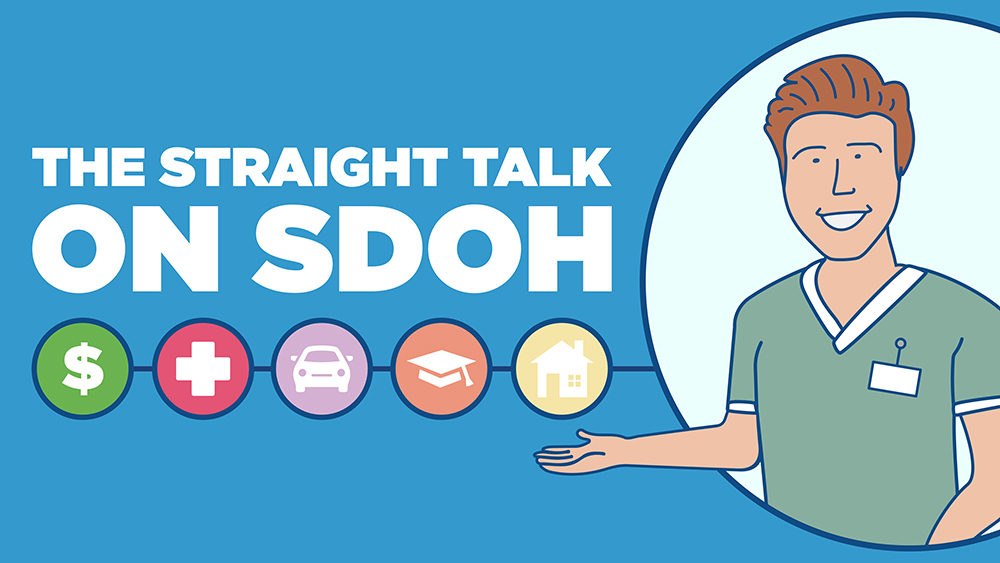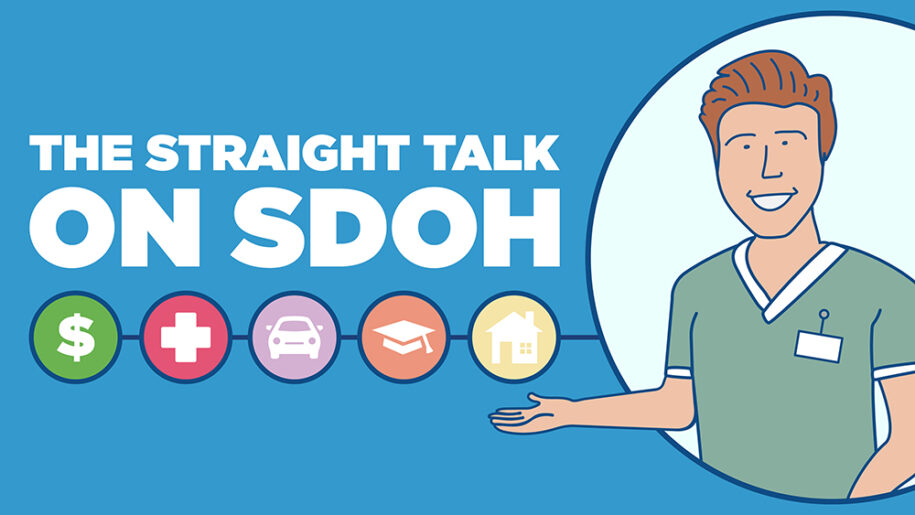
The Straight Talk on SDOH
How does a remote care model address one of the nation’s greatest health challenges?
Before we unpack the powerful force that remote care brings to bear on social determinants of health (SDOH), first we need to understand what they are. While there’s no simple explanation, we’re going to break down how they work as best as we can.
We can describe SDOH broadly as any part of the human experience that influences our wellbeing. That could be just about anything, right? In fact, you feel a little intimidated when you start counting up all the ways behavior and the world around you change your prospects for a long and fulfilled life. They shape things like what you have for breakfast, where your kids go to school and how they get there, how your house was built and how long since your last dentist appointment. That’s daunting.
The definition of SDOH depends on who defines them. Public health officials typically narrow down the list to umbrella descriptions. The big ones are:
- Income
- Access to health services
- Transportation
- Education
- Environment
The notion here is that, if you address high-level SDOH, your efforts trickle down and the others start to shape up.
Now that we’ve established what they are, let’s take a look at ways to optimize them.
Transportation gives us a good proxy for the rest. Public agencies and governments can strengthen public transit so the neediest neighborhoods have access to jobs, supermarkets and health centers. You start to see how addressing one overarching SDOH can concurrently build up many of the others. They’re all beautifully interconnected, and a well-managed initiative in one area can have profound benefits for the others.
So what about remote care?
As a remote care provider, Signallamp has a vast opportunity to alter social determinants of health on the order of a fine-tuned public transit system, except it’s one the whole nation gets to ride on.
No, we don’t manage bus routes. Instead, our remote nurse case managers reach into vulnerable populations – specifically Medicare patients living with chronic disease – and improve outcomes.
Public health agencies, all the way up to the World Health Organization, have teams dedicated to tackling SDOH disparities. But you know what they typically don’t have? An army of health workers on the ground, gathering data at the patient level and initiating life-changing interventions.
In fact, most health systems – whose job it is to treat people at the individual level – lack the infrastructure to engage patients with the frequency and intimacy required to produce the best outcomes.
“Making health care more accessible is a serious barrier,” said Drew Kearney, Signallamp’s co-founder and chief executive officer. “There are only so many doctors. There’s only so much time. Our entire infrastructure is based off of, ‘if you’re sick, and you show up, we can help you.’”
The COVID-19 vaccine rollout offers another object lesson. Those without access or technical skills to search for it need a substantial amount of support in order to get vaccinated, Kearney said. People who live in rural areas, those with limited internet access, without adequate transportation and lacking strong social networks have been held back from getting vaccine protection.
Remote care is an essential part of the pipeline
Signallamp’s remote care model delivers that technical knowhow through an entirely analog channel: the telephone. It’s like the natural gas line into your home. You wouldn’t hook your house directly to a transmission line; there’s too much pressure and volume. At that rate, the gas is useless to you. But a stepped down distribution line limits and regulates the flow so that you get the benefit of warmth. So it goes for people with SDOH barriers.
The information and resources are out there, just out of reach. Remote nurse case managers simply manage the pipeline that unlocks them.
When you introduce a remote care model through chronic care management, people with chronic illness – arguably the most vulnerable to COVID-19 risks – now have access to a provider who can help them work through scheduling a vaccine shot.
But that’s just the beginning. With few exceptions, remote care provides the gateway to start addressing just about every priority public health objective on the agenda.
Remote nurse case managers help their patients secure transportation for doctor visits and tests. They verify medication compliance and that their patients can afford it. They broaden their patients’ social network simply by checking in once a month.
They uncover food insecurity issues and environmental threats, for example lack of air conditioning during a heat wave, or a faulty appliance. A remote nurse case manager can’t show up with a toolbox and install a new furnace, but she can steer patients toward resources where those changes can start happening
Schedule time with us today to learn how Signallamp’s remote nurse case managers can improve social determinants of health among your chronic disease patients.

